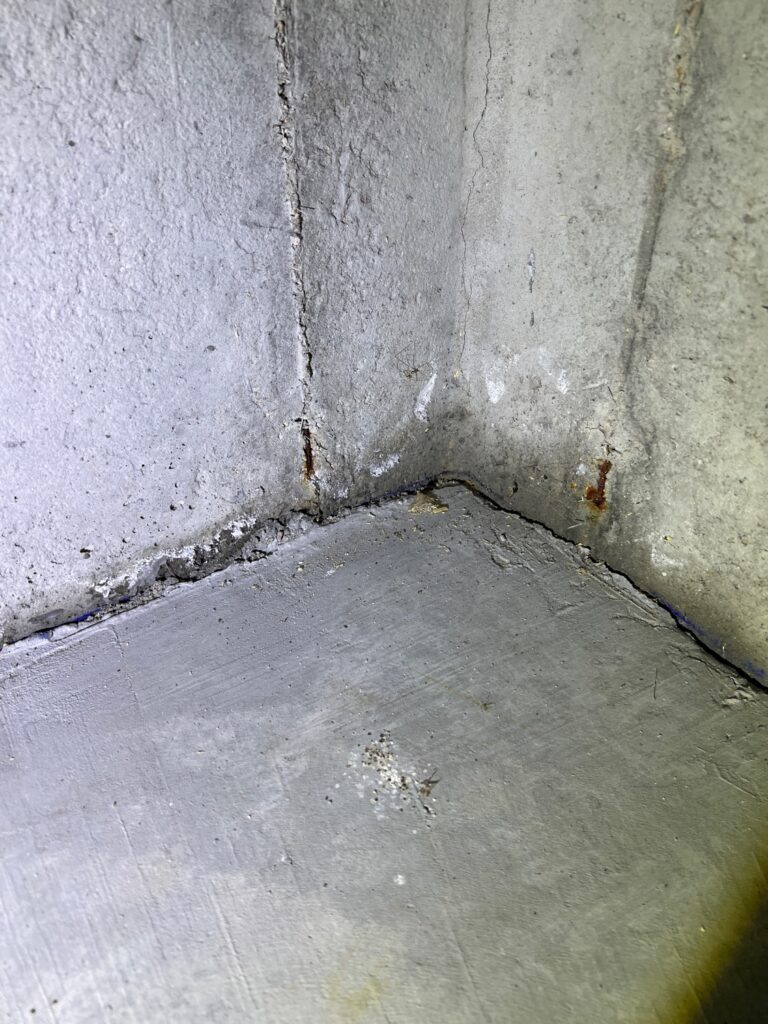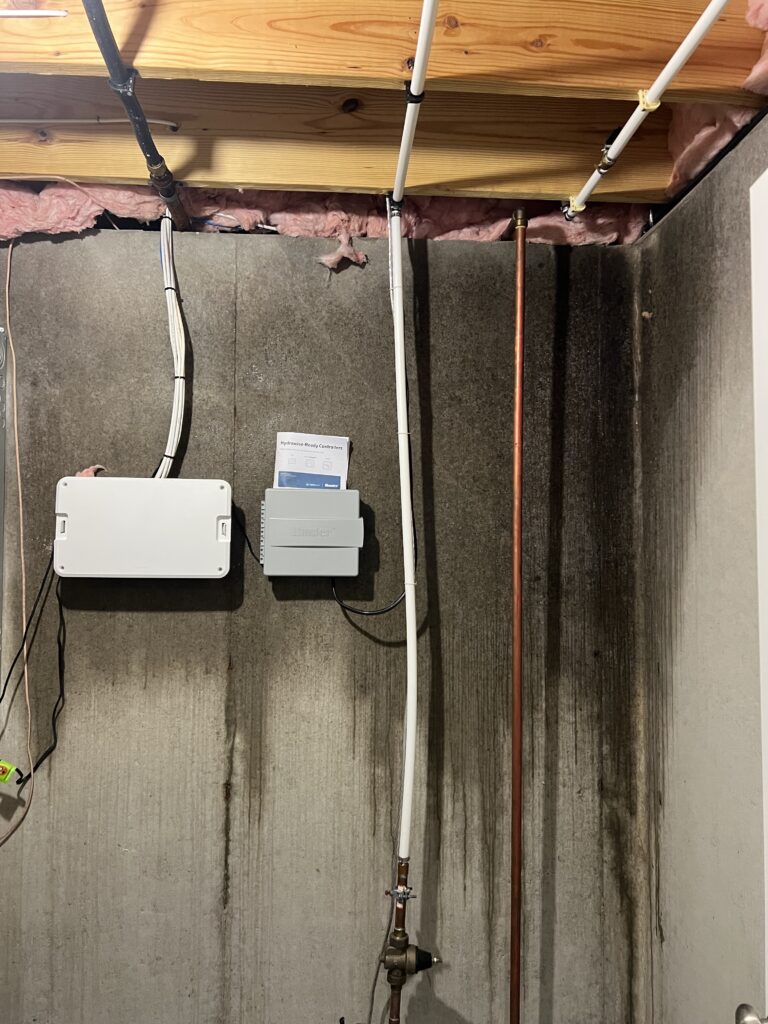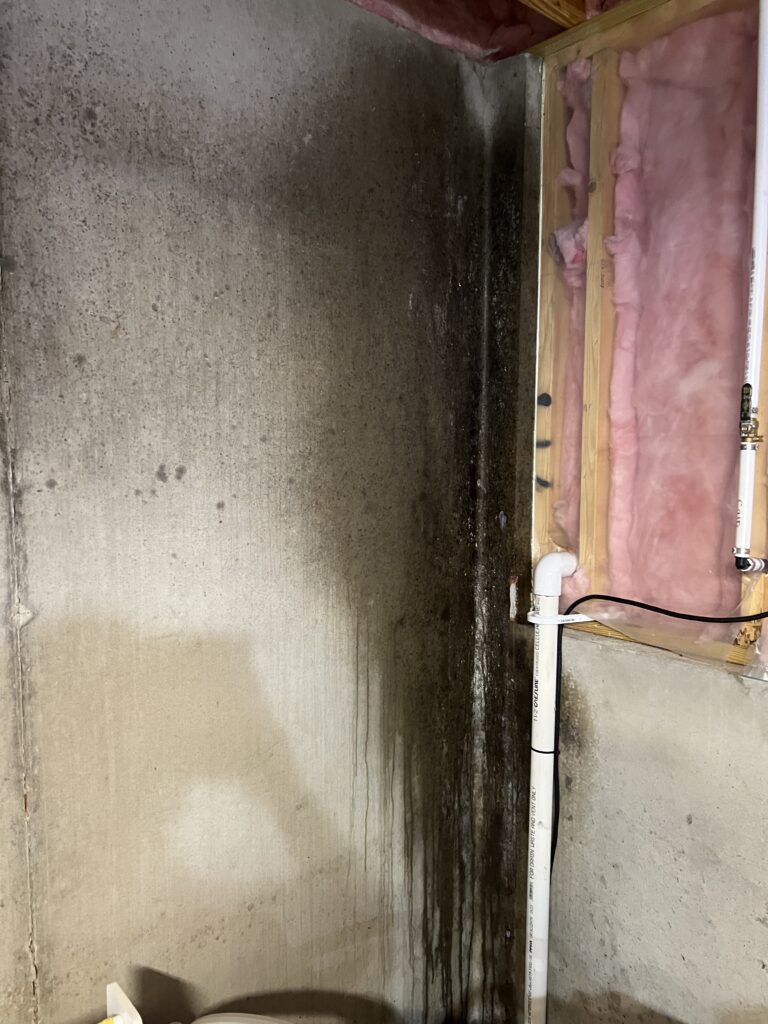My Foundation Walls are WET! – New Construction
I am a part of a few new construction groups on Facebook. These groups are great for helping people get answers to questions regarding their new home. One post I have been seeing a lot of recently with these cold exterior temperatures is with people’s basement foundation walls being wet. This is an extremely common issue on new homes and it’s easy to address! Let’s dive in on why this happens and what causes this issue.
Why Does this Happen?
Simply put this happens because of high indoor humidity. New construction homes are often constructed through all different types of elements, one big one being rain. Chances are very high that, at some point during home construction, the lumber used to construct the home gets wet (whether at the lumber yard, on a truck to get delivered, sitting in front of the house on the ground, during framing, etc.). Wood as we all know contains some percentage of moisture content as well as it holds moisture after getting wet. Once this wood is used in the construction of your home and your home is sealed from outside elements via roof, shingles, WRB, siding, windows, doors, there is no where for that moisture to escape to and no way for it to dry easily. That is unless you have that rare builder who actually properly dehumidifies the home before drywall, which no local builder does.
The indoor humidity level is then higher than normal and, when cold weather comes, that humidity condensates on cold interior surfaces (like foundation walls and windows). An easier way for me to explain what happens is to think about summer time when it’s hot outside. You pour a glass of ice water or ice tea inside and you take that glass outside and condensation forms on the outside of the glass. This happens because the Dew Point was reached. Same thing happens in the early morning time with your grass.
The concrete floor and foundation walls are also holding moisture, as they are concrete after all. The concrete floor sits on a moisture containing soil and that moisture can rise into the basement via cracks and gaps in the concrete (especially the gap where the floor and foundation wall meet (see picture below).

Looking at the picture above you can see where the foundation is a darker color near the floor from being wet/moist as well as the white stuff on the walls know as efflorescence. Efflorescence is the dissolved salts deposited on the surface of a porous material (such as concrete or brick) that are visible after the evaporation of the water in which it was transported (from InterNACHI).
That being said, once the home is constructed and you move in there will be a higher than normal level of humidity in the air (more so in the basement) from the once wet and/or new lumber as well as the concrete foundation. Not to mention the fact that most builders wash the basement out with a hose (cleaning the dirt and construction debris) so this further adds to the humidity in the basement.
When you get a lot of humidity inside the home it tends to cling and condensate onto cold surfaces such as the foundation walls or windows. If you look at where your foundation walls are wet it typically mirrors inside the area of your foundation that is above ground on the exterior. Below are some examples of condensation on foundation walls.


What has happened here is warm humid air inside the home condensates on the cold surfaces of the foundation walls (tends to happen on foundation corners). This foundation is not leaking and there is nothing wrong with it at all. The issue you are seeing is with indoor humidity. In some cases the foundation can get so cold (due to exterior temperature being so cold) that the condensation actually freezes and becomes ice. I recommend getting a hygrometer, which is a meter that measures humidity, and putting it in your basement. Humidity should stay between 40%-50%. Here is one I recommend: https://amzn.to/3umI0Ie
How Do I Fix This?
To fix this you need to lower your indoor humidity levels. Below are some things you can do.
1) Get a Dehumidifier!!
Getting a dehumidifier and running it 24/7 will make the biggest difference. Most dehumidifiers have settings so you can set the humidity percentage you want it to be so the dehumidifier runs until the air it is reading reaches that percentage and it will turn off automatically. If the humidity level goes above your setting then the dehumidifier will automatically kick on. I highly recommend getting a dehumidifier that has a hose connection that you can hook a hose up to and run the hose to your sump or floor drain. That way you don’t have to constantly check and empty the drain pan on the dehumidifier. Here is a link to one I recommend: https://amzn.to/3HACqVM
You also want to make sure the dehumidifier is large enough to cover the area you are wanting to cover. Typically the dehumidifier will give a square footage number for coverage.
2) Run Furnace Regularly in These Areas
You need to make sure your furnace is running regularly and that the air is heating these areas/walls of your home. Furnace air is dry (albeit you don’t have a humidifier connected to your HVAC system) so having that warm dry air circulating can help keep humidity levels low.
3) Turn Your Humidifier Down or Off
If your HVAC system is equipped with a humidifier (component that PUTS humidity in the air) then I recommend turning it down or off. Humidity can cause a lot of issues, I tend to recommend people get rid of whole house humidifiers and just stick to small humidifiers in a room by room situation if you need it for health/breathing reasons.
Doing the above things should solve the issue of having wet foundation walls. If you have done these things consistently for 2-4 weeks and are still getting wet walls then other measures may need to be taken. However, I am confident doing the above 3 things should solve the wet foundation wall problem.
As an Amazon Associate I earn from qualifying purchases.
